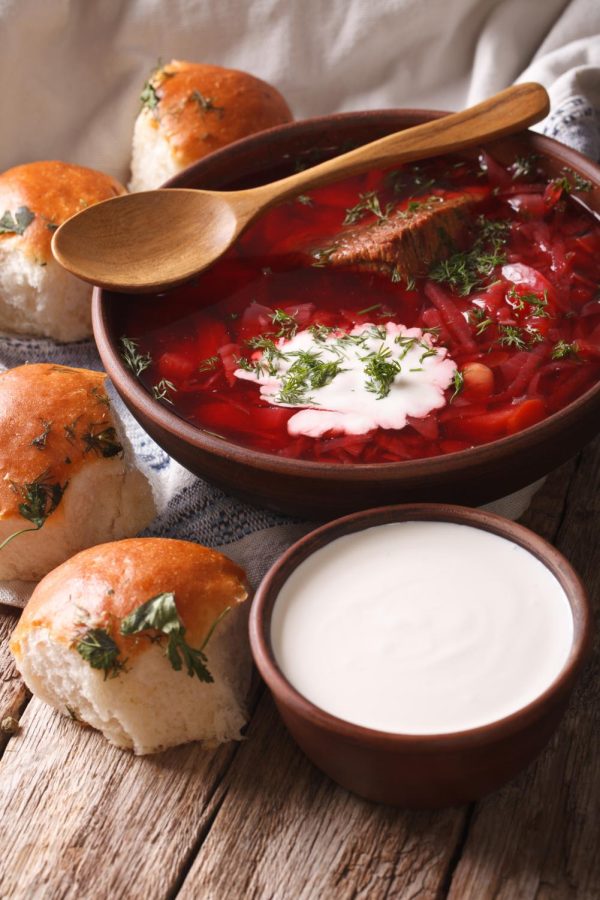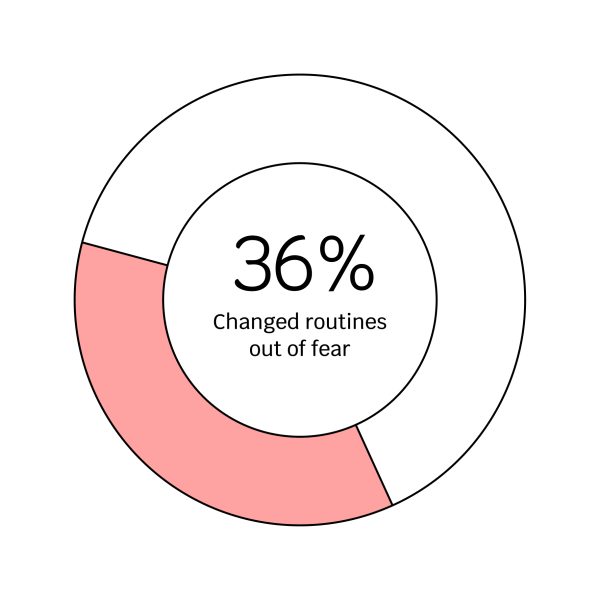A Love Letter to Borscht: Embracing Culture Through Flavor
January 23, 2023
I am upstairs in my room doing homework when I smell it: borscht cooking on the stove. The sweet smell of the beet soup wafts through our apartment, letting me know it’s time for dinner. I run down the stairs as soon as my mom says it’s time to eat. My dad is already at the table, excited to see which type of borscht she made.
I grab a slice of white bread. I dip it in the borscht, soaking up the flavor of the soup for me to enjoy between spoonfuls.
As a kid, I always devoured the broth but left all the
vegetables in the bowl. As I grew older, I stopped separating the ingredients. In this sense, borscht represented my growth into adulthood. Little by little, I trained myself not to be picky and to be grateful for what I have.
We ate borscht on holidays, but did not reserve it for special occasions. No matter what the calendar said, borscht was always on the menu.
Borscht is a dish that is over a millennium old. It evolved from something eaten only by the “rural poor,” according to Alexander Lee from History Today, to a meal enjoyed by the rich and the poor alike. People from different regions added ingredients available to them to replace those they did not have, and created new versions for various occasions.
The soup can be made with meat depending on preference. There is also cold borscht, which is made with apples and cucumbers. It is typically served during the summer. Then there is green borscht, which is made with spinach and can be cooked without beets.
This dish is popular among Eastern European Jews, many of whom cook red borscht during Passover and cold borscht during Shavuot, a festival celebrating the creation of the Torah.
But the beet soup is most commonly associated with Ukraine, where, according to UNESCO, it is considered a national dish. Borscht is a symbol of unity in the country, bringing family members together in much the same way the ingredients are mixed in a pot.
Food has always brought people together. Sharing a meal helps us form a community, and offers those who have
nothing in common a reason to gather. Food also brings
families together, giving each person a reason to come out of their room and sit at the table with their parents and siblings.
Food is passed down from generation to generation, and travels from country to country as people move around the world. New dishes form when people combine their recipes with those from other cultures, or when they discover new ingredients to substitute for old ones.
The history of any part of the world can be told through food. The United States has a wide variety of foods we call ours from many parts of the world: foods like pizza that made their way here through colonization and immigration.
In France, the baguette, which contains wheat flour, water, yeast and salt as its only ingredients, tells the story of how Napoleon created sustenance for the French army in the 19th century, or at least perpetuates the myth of its creation.
In Haiti, a soup called joumou tells the story of the nation’s slave revolt against the French colonizers in the 18th century. Once reserved for French plantation owners on the island, the soup was claimed by the Haitians after the successful
revolution. It became a symbol of the country’s independence.
Food has been traded throughout the world for millennia, leading to the creation of dishes that were not possible before a country acquired a certain ingredient.
Each country has its own unique cuisine that tells the story of its ups and downs, its historic achievements and its cultural traditions.
For me, as a person of Russian-Jewish descent, borscht was always that food.





